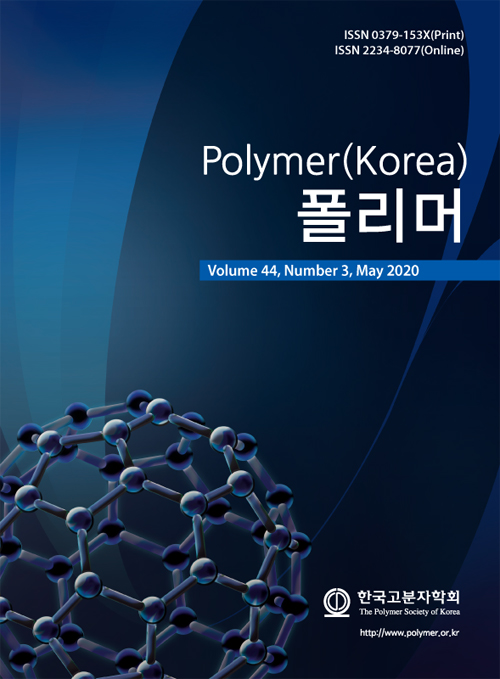- Study of Compression Set of Ethylene Vinyl Acetate (EVA) Foams
Bo Kyoung Jung*,**, Geon Wook Park*, Jae-Keun Yu*, Hyo Jun Kim*, Dong Gun Kim*, Minguen Kim**, and Kyu Hyun**,†

*Korea Institute of Footwear & Leather Technology, Busan 47154, Korea
**School of Chemical and Biomolecular Engineering, Pusan National University, Busan 46241, Korea- Ethylene Vinyl Acetate(EVA) 발포체의 영구 압축률에 대한 연구
*한국신발피혁연구원, **부산대학교 화공생명공학부
Ethylene vinyl acetate (EVA)
foams were used to measure the change in compression set with test temperature
variations. In particular, the compression set is expected to increase as the
temperature increases. However, for practical studies, diameter shrinkage
occurs at high temperatures, and the compression set decreases. It is because
the existing compression set only reflects the height change due to compression,
and the current compression set has difficulty in explaining the compression
set at high temperature with diameter shrinkage. In this study, the concept of
volume compression set reflecting both diameter and height was introduced. The
new volume compression set explained very well the compression behavior of EVA
foams at high temperatures. In addition, the concept of volume compression set
is expected to help set the standard for judging the heat resistance and
durability of foams at elevated temperatures.
Ethylene vinyl acetate(EVA) 발포체를 이용하여 시험 온도 변화에 따른 영구 압축률 변화를 측정하였다. 특히 온도가 증가하면 영구 압축률 역시 증가할 것으로 예상되었으나, 실제
연구의 경우 고온에서는 지름 수축이 함께 일어나며 오히려 감소하는 경향이 나타났다. 이는 기존의 영구
압축률이 압축으로 인한 두께 변화만 반영하기 때문이며, 기존의 영구 압축률로는 지름 수축을 동반하는
고온에서의 영구 압축률을 설명하기에 어려움이 존재한다. 본 연구에서는 지름과 두께를 모두 반영하는 부피
영구 압축률의 개념을 새롭게 도입하여, 고온에서 설명하기 어려웠던 영구 압축률의 경향성을 부피 영구
압축률을 통해 설명하였다. 나아가 부피 영구 압축률의 개념이 고온에서 발포체의 내열성과 내구성을 판단하는
기준을 세우는 데 도움이 될 것으로 기대한다.
Keywords: ethylene vinyl acetate, foam, compression set, VA content
- Polymer(Korea) 폴리머
- Frequency : Bimonthly(odd)
ISSN 0379-153X(Print)
ISSN 2234-8077(Online)
Abbr. Polym. Korea - 2023 Impact Factor : 0.4
- Indexed in SCIE
 This Article
This Article
-
2020; 44(3): 264-269
Published online May 25, 2020
- 10.7317/pk.2020.44.3.264
- Received on Nov 18, 2019
- Revised on Jan 23, 2020
- Accepted on Feb 14, 2020
 Correspondence to
Correspondence to
- Kyu Hyun
-
School of Chemical and Biomolecular Engineering, Pusan National University, Busan 46241, Korea
- E-mail: kyuhyun@pusan.ac.kr








 Copyright(c) The Polymer Society of Korea. All right reserved.
Copyright(c) The Polymer Society of Korea. All right reserved.